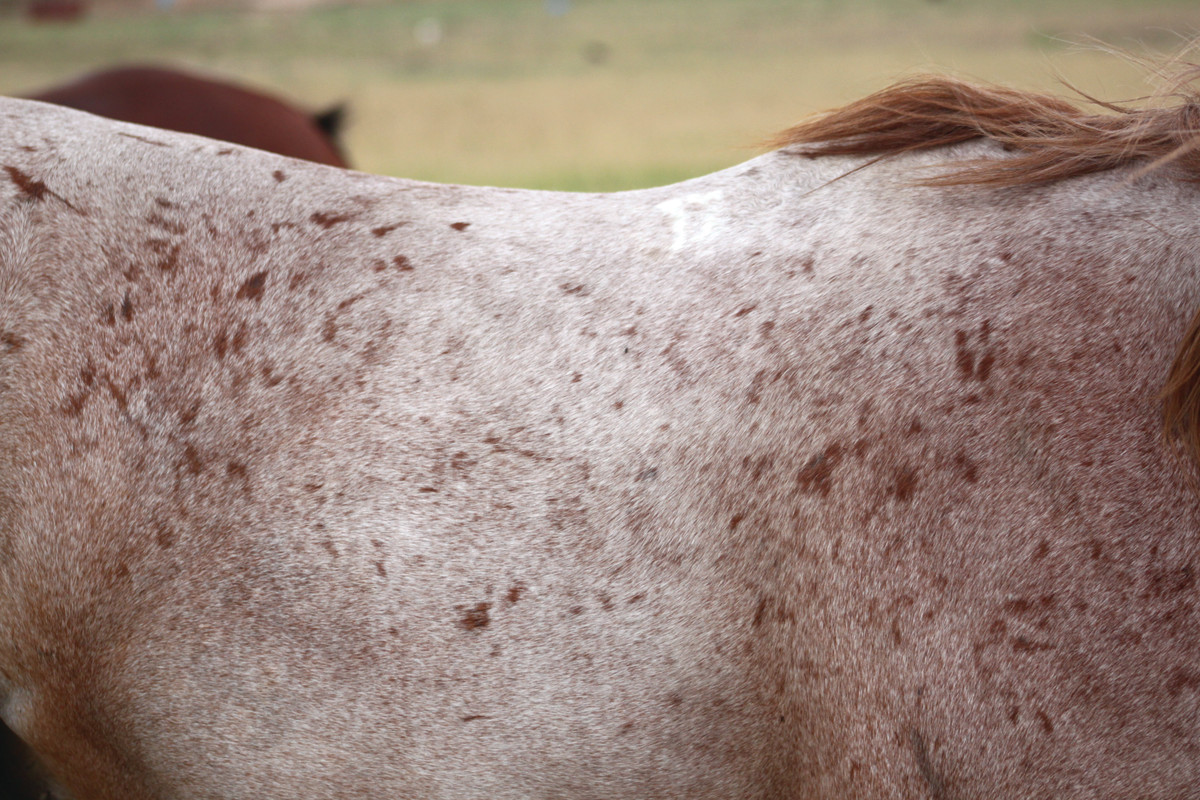It’s one of the last things you think about when you’re wrangling practice steers or loading horses to go rope or buying your membership card.
But, the fit of the saddle you’re throwing up there on your horse every day is the single most important factor in the longevity of your horse’s performance—and your own success when the money’s up.
Don’t underrate this. Don’t decide it really doesn’t matter that much.
It does.
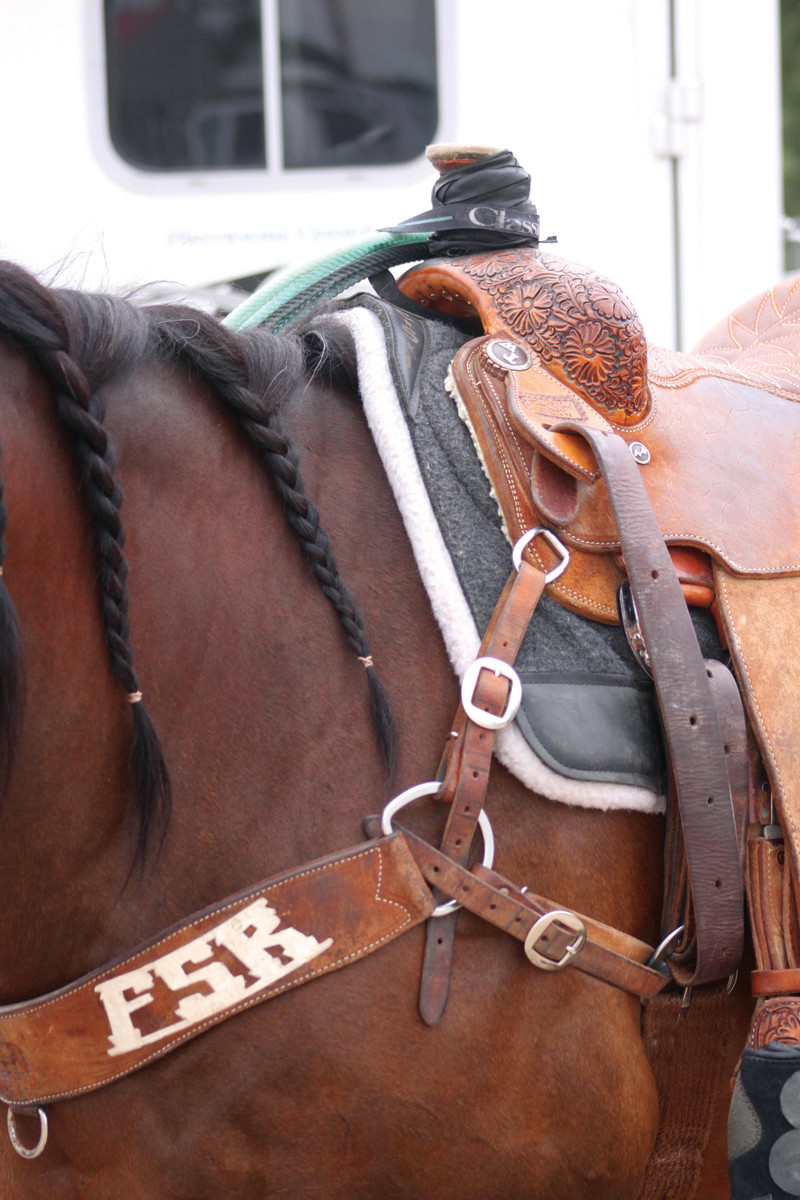
Today’s Trees
Your saddle isn’t made differently than saddles were made a century ago. But after every long cattle drive, a cowboy would pull off the sheepskin, reshape the bottom of the tree and line it with new sheepskin. In the cavalry, officers were taught to re-adjust the stuffing through the bottom of the saddle four or five times a year.
Today, despite similar manufacturing, nobody refits saddles. They either fit well or they don’t. If they don’t, your head horse gets bad in the box, starts ducking, won’t run, won’t pull, or doesn’t collect for the move out of the hole. If they don’t fit, your heel horse can’t collect for the corner or won’t stop or can’t take the jerk. These are not small consequences.
“A saddle tree is made of the front, the cantle, and two bars,” said Jesse DeBord, general manager of Double J Saddlery. “For only being four pieces of wood, it can get pretty complicated.”
Equine anatomy can help us keep it simple. There’s a reason the standard tree, which is wider in the middle with a slight rock in the bars, has had that main design for more than 4,300 years. It’s so that a horse in motion can raise its back to engage its hindquarters, thereby raising the middle of the saddle bearing most of the weight and clearing the always-moving shoulders and loins.
Within those four wooden pieces are a few of the most important attributes to good fit, according to a handful of American saddle makers. For Cactus General Manager Josh Johnson (who won more than $12,000 at the Reno Million in June), your ultimate goal is the even disbursement of pressure from the front of the bars to the back—no gaps or pressure points.
For Larry Coats, the lifelong team roper and founder of Coats Saddlery who’s outfitted more NFR team ropers than arguably anyone, it’s also about balance from front to back because imbalance creates a teeter-totter effect and hurts both the horse and the roper.
“Bridging” is an equally detrimental problem, which is when a saddle isn’t making enough contact under the middle, resulting in side-to-side rolling.
Chris Weaver, team roper and vice president of new USTRC sponsor Bob’s Custom Saddles, agrees that saddle fit has less to do with the width of a tree than it does the rock, angle, and twist of the bars. For DeBord, the biggies are also the shape and angle of the bars. Bar configuration is such a difference-maker that Double J literally has more than 200 “fitting trees” you can try. In fact, DeBord custom-built a tree for Chris Francis a month before Francis won the BFI, and that tree freed the horse up to run faster and harder, and helped Francis win the biggest roping of his career.
For Joe Peterson of 3 Forks Saddlery in Montana, it’s even simpler.
The former engineer-turned-saddle-designer said the most important aspect is complete contact throughout the horse’s back. The spread between the bottom of the bars is a tree’s most important feature, he says, and he prefers flatter bars that cover more surface area.
Anatomy & Reflexes
The need to distribute weight evenly, with no digging in front or back, is best explained by Master Saddlefitter and Equine Ergonomist Jochen Schleese, a German who developed the first school for saddle fitters and is asked regularly to speak to veterinarians, such as at the Veterinary Conference in Sao Paulo Brazil in 2011.
According to Schleese, “your horse has two systems of suspension in its body which are not held firm by the skeleton. By changing a horse’s way of going and its muscling, we can actually affect these two systems. Damage these systems and you can permanently change your horse’s movement and conformation.”
The first system is the spinal nuchal ligament, which runs from the poll down the spine to the tail and supports collection. A pinching saddle can cause a swayed back and unwillingness to bend.
The second system involves the muscles that connect the shoulder to the ribcage (horses don’t have a collarbone). When the front of your saddle digs into those muscles, the horse reflexively hollows its back, lifts its head and rotates its pelvis forward. It’s like your own reflex when the doctor taps your knee and you can’t avoid kicking your leg out.
That’s why Schleese’s entire program is about getting the saddle off the shoulder blades, off the spine, and off the loins–while maximizing the surface area that it actually sits on. Fact: the only area of your horse’s back equipped to support weight is between the base of the withers and the 18th thoracic vertebra (or last rib). On most horses, that’s a 4-inch high by 16-inch long area on each side of the spine.
The tree of a saddle is designed so that the front and back of it each carry 30 percent of the load, and the middle carries 40 percent plus the rider’s weight. It’s crucial to center your biggest load in the middle of the saddle because that’s what allows the horse to lift its back.
The center of your saddle’s underside simply must make good contact with the middle of the back, which is not something you can eyeball. Throw your saddle on without a pad and run your hand up the middle. You need pressure here.
Misconceptions
The lack of standard criteria or methodology, or even language used for saddle-fitting throughout the industry, has led to plenty of confusion, like with the width of the “gullet,” or distance between the bars at the front of the tree.
While the phrase “gullet width” is often thrown around, each saddle maker interviewed said gullet width is one of the least important specifications of a saddle, unless your horse is very narrow or very wide. If your angles are wrong, it doesn’t matter how narrow or wide your saddle is.
“I can put an eight-inch wide gullet on a horse, but if the bars are angled straight up and down, I’ll cripple him,” said Weaver, who has roped at the BFI and plenty of USTRC Open events.
Coats often runs across people whose saddles are tight in the shoulder area and assume they need a wider saddle, when, actually, their saddle is already too wide, which is why it’s tipping down in the front. In fact, Coats recently widened his rear gullet an inch and added more rock to his bars to provide more of that weight balanced in the center.
Nearly every saddle maker sticks with a 6.5-inch front gullet. Famed calf-roping saddle maker Howard Council, whose woods were utilized by basically all the NFR calf ropers a decade ago, suggested you check to see if the saddle kicks up in the back. That immediately would tell you the tree is too wide in the front.
Coats cringes to see people use a saddle that’s too wide—or set too far forward—and then use their breastcollar to hold it too far forward.
Bottom line? Gullet width has nothing to do with your horse’s three-dimensional back shape—or the size and shape of the support area on that ribcage.
Another issue saddle makers see ispeople who over-pad their rope horses.
“A 1-inch pad is more than enough if the saddle fits correctly,” Coats said. “If you get yourself a pair of shoes that are too big, and just add a couple more pairs of socks, your foot is still moving around in that shoe, and that’s what causes blisters.”
It’s an illusion that more padding will alleviate a poor-fitting or bridging saddle, added Weaver, whose company uses five different bar configurations. In fact, you could use a thin Navajo blanket and cinch up and ride around to see what you’re really dealing with.
Also, when your horse bends its head around, the vertebrae in its withers must rotate. With too much padding, or if the bottom of your swells are sitting down on the withers, those vertebrae can’t lift during collection and they can’t rotate, which inhibits movement of the legs and shoulders. You need at least a 1.5-inch clearance above the withers and an inch and a quarter on either side.
And just where should your saddle ride? To avoid sitting the saddle directly on the shoulder blades (which can damage the cartilage, impinge spinal ligaments, and could even pinch nerves) and to keep it from pressing down directly on the low back behind the last floating rib (which will cause soreness, hollowing of the back, sacroiliac pain, and muscle atrophy), you want the front of the bars (indicated on most saddles by the concho) behind the shoulder blades. Don’t be afraid to pick up a foreleg on your horse and peddle it to see just how far back that scapula needs to rotate, free from the tree.
When you throw your saddle on at the withers and then push it back to that sweet spot (which smooths the hide), you should be able to slide your hand between the shoulder area and saddle without it being tightly impinged. (Remember, you’re not weighting the saddle yet.)
The front of the bar and the scapula should move past each other like a sliding door if their angles parallel each other. If that shoulder blade comes back and rams the front of that tree every stride, it’s just like banging your knees against a wooden board with every step. It doesn’t hurt badly at first, but the cumulative effect will be knee damage. Make sure your tree bars have the right angle for your horse’s build.
And what about dry spots in the sweat patterns after you ride? According to Schleese, the most sweat should be found underneath the most movement of the saddle—near the front and the back—and the least sweat where the saddle fits the snuggest or has the least friction. So, it’s fine to see a large kidney-shaped dry area under the fenders on each side. But if you see any dry spots of about an inch in diameter up to the size of the palm of a hand, you can worry about pressure points.
Back Breakdown: Saddle fit on a variety of backs
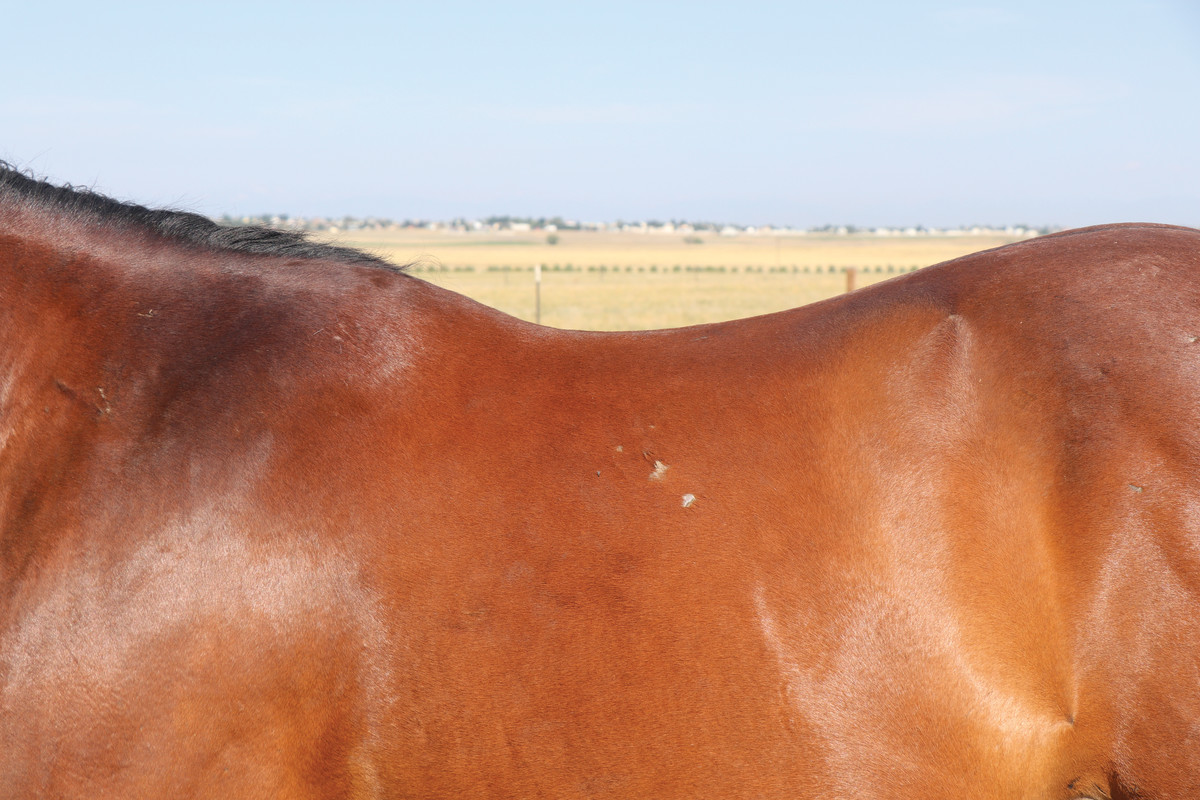
A) This bay heel horse has a huge dip behind his shoulder blades. His sway back, caused by years of poor-fitting saddles, needs a pad with added orthotic support along the whole stretch of his spine. Just padding behind the shoulders, where his biggest dip lies, would create too much pressure behind his last rib above his loin, according to certified equine massage therapist Mandy Hagler.
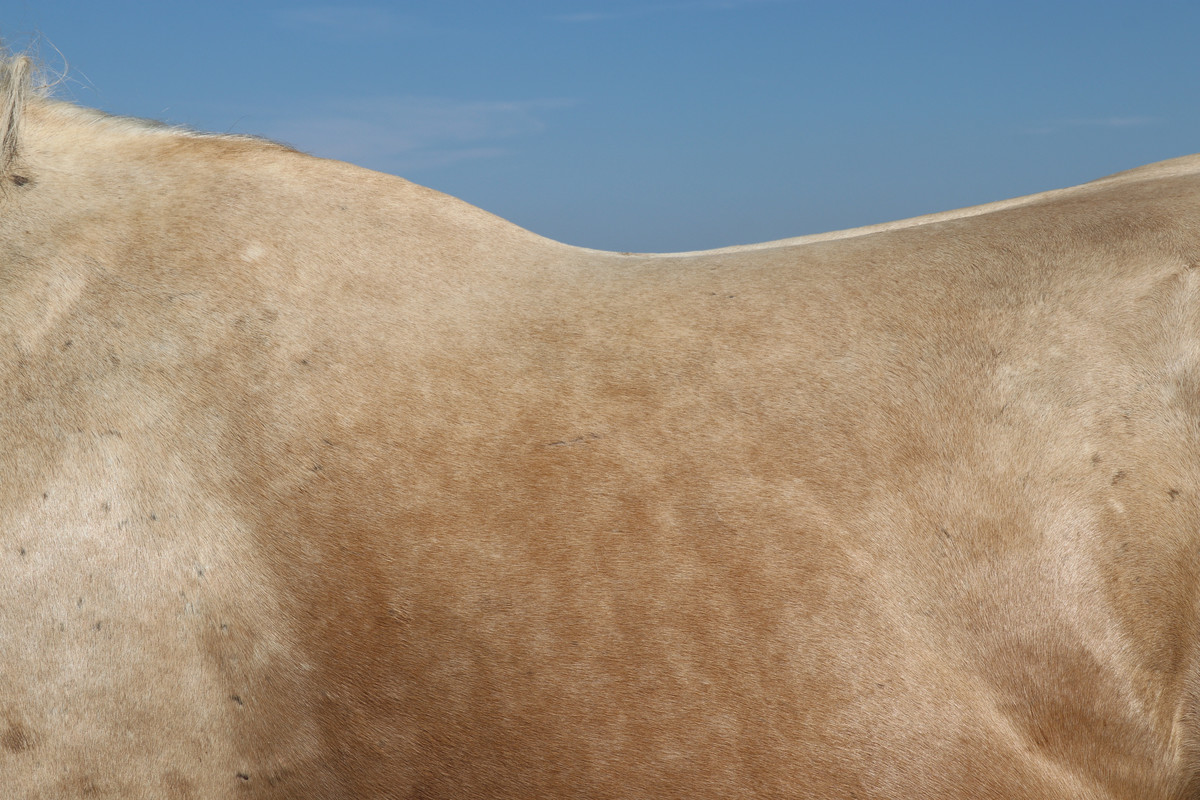
B) This palomino head horse also has a dip behind his shoulder blade from ill-fitting saddles, but his is less swayed than the bay and sorrel. Hagler says he needs just a little added padding along his topline, evenly spread across his back, to keep the saddle from pinching in front of his withers and behind his last rib.
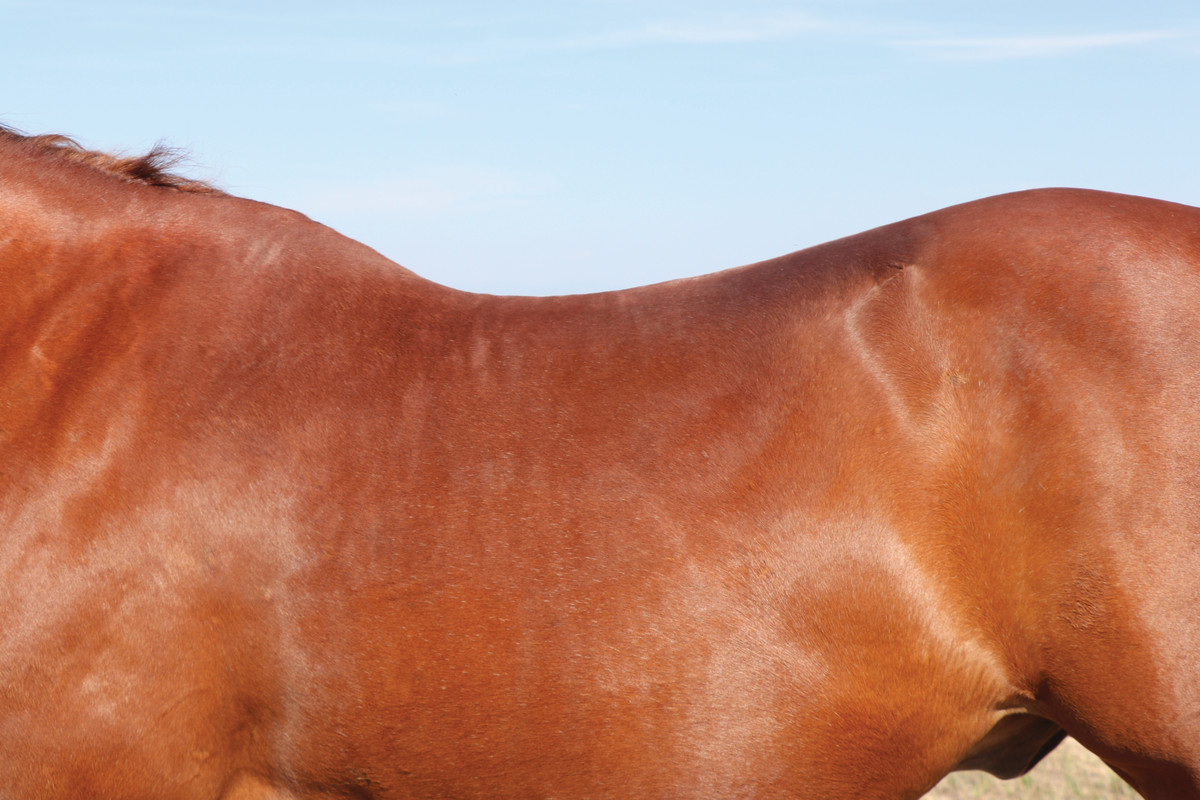
C) This sorrel head horse is also extremely swayed from years of poor-fitting saddles and unsupportive pads. Hagler suggests padding along his topline, no farther than to his last rib, to evenly distribute pressure across the horse’s back.
What’s at Stake
Unfortunately, a saddle that rocks or bridges is so common it might even be happening at your barn.
Even the most athletic, powerful, head horses are typically not level-backed. They have short backs; big, strong shoulders; and big hips with a significant slope from the mid-back up to the croup.
And many of today’s top heel horses, even if they are level-backed, are quite small—under 15 hands—which means today’s big roping saddles have nowhere else to be placed but directly on the shoulder blades and low back, just from sheer lack of real estate. Ouch.
Shoulders are constantly moving parts, rotating forward and back with each stride, and the loins are moving up and down with each stride. So, on a short-backed or slope-backed horse, your saddle could be resting entirely on moving parts, and, therefore, slightly rolling side to side. You may not consciously notice it, but it’s bothering your horse and affecting your balance as you stand up to rope.
This kind of bridging is what happened to 2016 PRCA/AQHA Barrel Horse of the Year CFour Tibbie Stinson, a quick-footed and explosive little sorrel, owned by Colorado’s Conrado family, with a very short back who was quite grouchy to saddle.
After years of making short-backed head horses more comfortable under her husband, an ex-college-football lineman, certified equine massage therapist Mandy Hagler has worked on several NFR roping and barrel racing horses, including Tibbie.
She suggested two-time NFR qualifier Ivy Conrado apply a quarter-inch piece of felt, maybe four inches wide, over the pad in the middle of the back or “the lowest part of the canoe,” if you can visualize the topline as a boat. Instantly, Tibbie stopped pinning her ears while being saddled.
Conrado, an excellent horsewoman who couldn’t figure out why she felt unstable during a hard turn, realized from video footage that her saddle had actually been slightly moving. She finally had a stable seat once her saddle’s weight was landing where it should have always been—in the center—with a bit of clearance for the shoulders and loins. Once she figured out that secret, she switched to CSI Saddle Pads as a permanent solution.
“In team roping, we’re cinching up as physically tight as that horse can take, and we want nothing moving,” said Weaver. “Our two standard trees are fine on 90 percent of horses, but I won’t say you can’t do things to help. For instance, I believe in pads that are contoured to the horse’s back. Myself, I can buy the best boots on the market, but I still need insoles, you know?”
Care is required. An esteemed tree-maker once told Weaver that every action has a reaction, and that’s why any haphazard adjustment can solve one problem, but create another.
In Hagler’s experience, increasing the contact under the lowest part of a horse’s topline has been an effective way to aid in pressure distribution. But, beware of saddle pads with extra padding built in at the front, supposedly to fill in the hollow spots some horses develop behind their shoulder blades. You’ll just increase the bridging and make the atrophy worse.
Late tree-maker Bret Hadlock invented something else for horses with difficult backs to fit or, say, asymmetrical shoulder areas. Bretton Shell Pads sends you a casting kit with which you send back a mold of your horse’s back. Eventually you receive a felt pad with a sewn-in custom fiberglass shell the exact shape of the horse’s back. It offers flexion or rigidity where the horse needs them and distributes pressure over 450 square inches.
All of these tricks to even up your weight distribution are not about bad saddles. The best-made saddle can bridge if your horse’s back isn’t a standard size and slope, or your saddle placement hasn’t been correct.
Young horses’ conformations, in particular, could change drastically from the time they’re 4 until they’re 8, with their withers coming up and shoulders moving up and back. Growth plates close from the bottom up, so a horse’s spine isn’t finished changing until he’s almost 6. For its lifetime, a horse will demonstrate the movement patterns it learns in his first year under saddle, so check your young horse every six months to ensure the same saddle is still fitting properly.
Unfortunately, “Saddle Fit for Dummies” doesn’t exist yet, so it’s your responsibility to know the difference between a comfortable fit and a problem-causing fit. Still, you can use common sense. Most of the pressure should be under the middle of the saddle. The shoulders need to be able to rotate back without hitting the bars of the tree. And you don’t want rocking or bridging.
If you’re in the market for a new wood and can’t take your horse for a fitting, help your saddle maker help you. Send photographs of your horse’s conformation—a profile view and angle from the shoulder back and from the hips forward. Also, your local dealer will often let you try a saddle out. And some makers, like Double J Saddlery, offer a demo program whereby you can try one of their hundreds of tree variations on your horse. You have up to five days to test-ride the saddle, then can return it less a $200 processing fee, or order that model and the fee is waived.
Your horse’s longevity and your throwing platform are at risk. Good luck.
Padded Solution
Your saddle pad can make or break your horse’s comfort and performance. CSI Saddle Pads, based in rural Missouri, developed a pad with Flex Plate technology that creates a larger footprint for the saddle tree and more effectively disperses the rider’s weight and lessens impact to the horse’s back. CSI Saddle Pads Flex Plate is built to free up your horse’s shoulders to pull, turn, and face, and to allow your heel horse to stop without walking out of it.
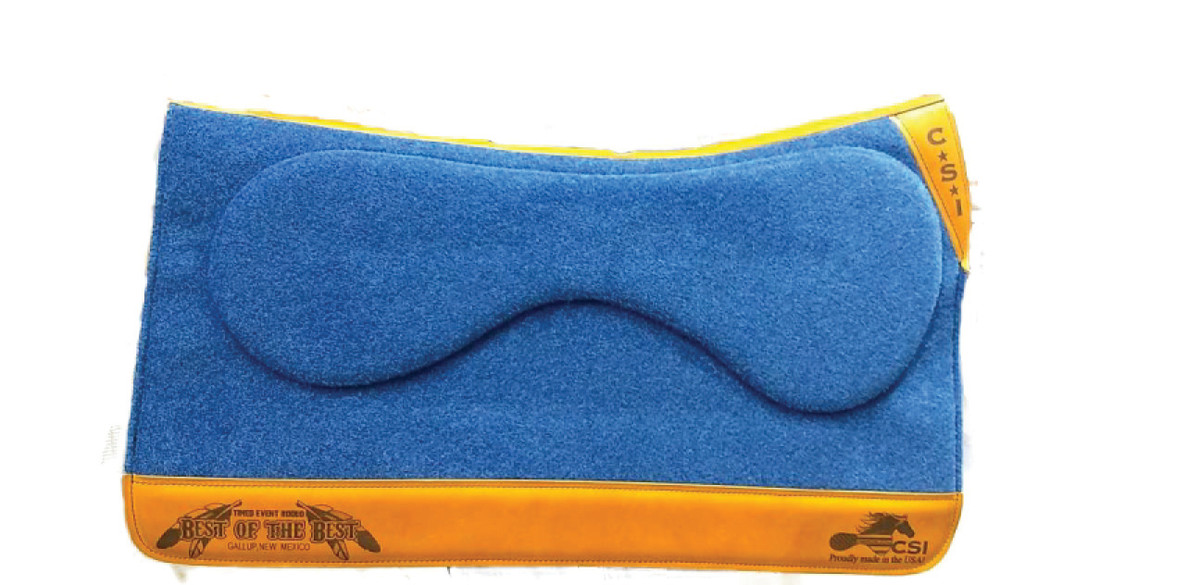
Built with a two-and-a-half-inch contour to relieve pressure on the wither and help cool-air flow under the saddle, CSI Saddle Pads’ and their Flex Plate creates an orthotic effect to more evenly distribute saddle tree pressure, rider weight, and impact.
“Any time you put a saddle on your horse and his head goes up, he’s telling you he has pressure on his back,” CSI Saddle Pads’ founder, Donna Saddoris, said. “When they raise their head and hollow out their back, they will develop bad posture and bad habits. We want to reverse that muscle memory. What we’re trying to do is put the horse in the frame of collection. If a horse is sore in the back and the saddle tree is putting pressure into them, they can’t go into that frame. The Flex Plate distributes the saddle bar pressure evenly down the horse’s back, so that Flex Plate can take the beating, not the horse.”
CSI Saddle Pads are made in America, by American workers. The native-wool bottoms of the pads are reversible, and need to be replaced every three to five years. The top of the pad—that houses the Flex Plate—is designed to last 15 years.
csisaddlepads.com; 660-638-4274
Sponsored content
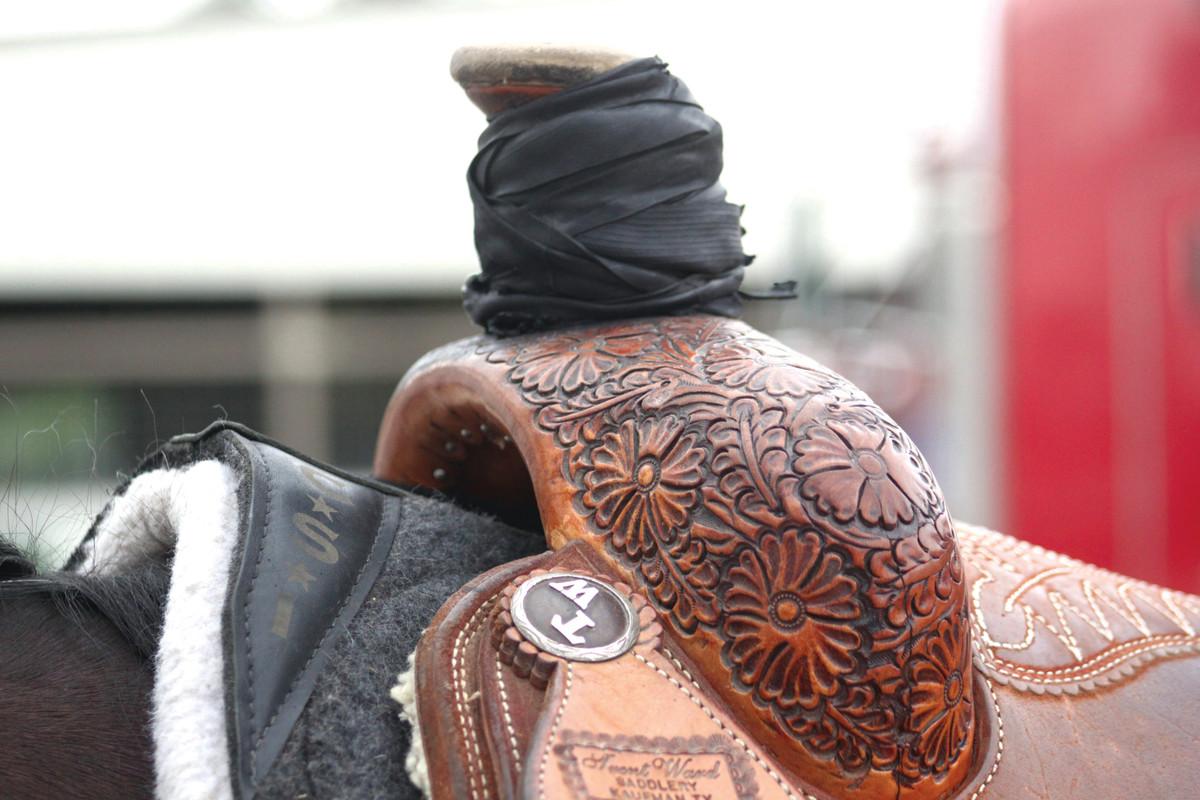
MOST COMMON FIT ISSUES
•Front pressure on shoulder blades from too-wide gullet or placement too far forward
•Front and/or lumbar pressure from saddle too long for support area
•Angle of bars not parallel to angle of shoulders
•Saddle hitches to one side
•Twisted tree (front is angled in one direction and back in another)
•Rocking (bars too flared, causing extra pressure in center)
•Bridging (no contact under middle of bars, causing extra pressure on front and back edges)
•Overpadding (makes saddle sit higher, meaning it will roll easier)
SIGNS OF POOR SADDLE FIT
• Performance: Is your horse using his body correctly getting a hold of a steer? Is he avoiding stopping hard? Is he running less than full speed? Refusing to pull? Bucking? Is he acting up in the box? Is he pinning ears, biting at you, or swishing his tail when his back is brushed or he’s cinched up?
• Place saddle on your horse with no pad. If you’re unable to slide your hand between the horse and tree in any section, it’s too tight. If you’re unable to insert a few fingers between the top of wither and gullet of saddle, that’s not enough clearance.
• If you can fit more than a couple fingers above the withers, your tree is probably too narrow and perched up too high. If you can only fit one finger, or the saddle touches the withers, the tree is probably too wide.
TOP 10 symptoms of poor fit
1. Tight or hard muscles at the edge of the shoulder blade
2. Tripping in the front end
3. Twitching at the elbow
4. Muscle atrophy in the loin area
5. Hair rubbed off or white spots
6. Bucking or crow-hopping
7. Muscle atrophy at croup
8. Heart and/or breathing issues from meridian blockage
9. Uneven sweating
10. Shortened strides
